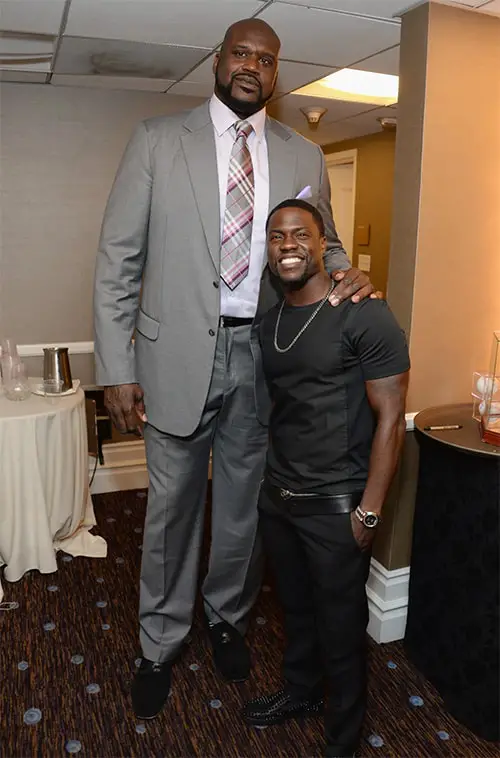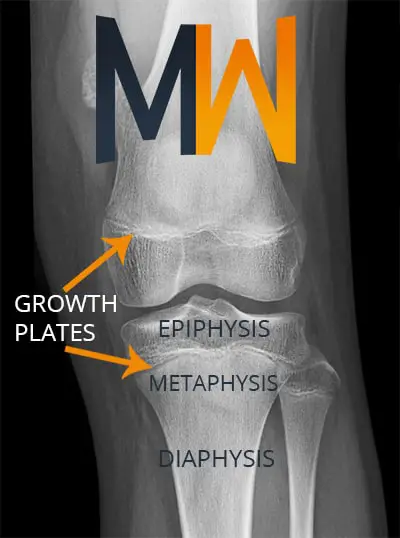
The growth plates play a significant role in determining one’s height in adulthood. They are sites of new bone creation and responsible for making you taller. Normally, the growth plates close off after puberty.
There is no way to reopen the growth plates after they close. However, that does not mean everyone stops growing right after puberty. For some people, the growth plates may remain open as late as early adulthood.
I will discuss the science explaining growth plates and human growth, and how it is possible to grow taller even after puberty.
Growth Plates
The medical term for the growth plate is the epiphyseal plate. These plates exist in different parts of the body where we have long bones, particularly the legs (tibia and fibula), thighs (femur), forearms (radius and ulna), and also in the bones of our hands and feet.
What Is the Purpose of Growth Plates?
As the name suggests, it is in the growth plates where most of the longitudinal growth happens in humans. The increase in the length of a person’s limbs is determined by how the growth plate functions.
Bones do not grow from the middle. Instead, bones grow from the broader part of the bone towards its end—where the epiphyseal plates are. The growth plate consists of cartilage cells.
The insulin-like growth factor-I (IGF-I) hormone stimulates the growth plate to produce more cartilage cells. These new cells push the older cells towards the center of the bone. Eventually, the older cells mature and harden, elongating the bone and making the person taller.
A person may not grow as tall as his full potential if there is a genetic issue, congenital issue, or an injury that affects the growth plate. Nutrition and other hormones also influence the growth plates.

Factors Affecting the Growth Plates and Human Growth
Several factors affect human growth, such as genetics, environment, nutrition, and hormones.
Different hormones have different effects on the growth plate. They either encourage or slow down growth.
Studies have found that human growth hormone (GH) and IGF-I are the primary stimulators of human longitudinal growth or increase in length. The GH stimulates the release of IGF-I in the growth plates and the liver. Shim (2015)
Some hormones, on the other hand, cause the premature closing of the growth plate. One such hormone is estrogen. Vascular endothelial growth factor (VEGF) also has a significant role in closing the growth plate.
A study by Emons et al. (2010) concluded that estrogen stimulates the production of VEGF.
Estrogen is responsible for why people with precocious puberty stop growing earlier than others their age. Precocious puberty is the term used to refer to the early onset of puberty in female children.
When Do Growth Plates Close?
Growth plates remain open until the end of puberty for most humans. On average, it is towards the late teenage years. In males, it generally closes around the age of 15 to 18 years, and in females at 13 to 16 years.
However, growth plates on some parts of the body may close later than others. For some people, they may close as late as early adulthood.
Once the growth plates close, that means that the natural increase in height stops. There is no other way for a human being to grow taller without intervention once the process completes.
How to Check if Growth Plates Are Still Open?
An x-ray, usually of the wrist, is the most common way to check if the growth plates are still open. However, this is not a reliable way of knowing for sure if you have stopped growing.
As mentioned above, different growth plates could close at various times during a person’s growth period.
Every location of the growth plate needs an x-ray to see if all of them are indeed close. It is the only way to know for sure, rather than relying on the result from one part of the body.
The growth plates will show in an x-ray as a thin line near the wider part at the end of the bone. Once the growth plates close, these lines are no longer visible, and you will only see a solid bone.

Can Growth Plates Be Reopened?
The straightforward answer is no. Once the growth plates close, they can never reopen. The process is irreversible.
Growth plates consist of cartilage cells, which eventually mature and turn to bones.
The growth plates are closed when these cells all completely mature and become part of the bone. Once this happens, it cannot turn back into cartilage again.
Is it still possible to grow taller after the growth plates close?
The question remains if it is still possible for humans to become taller after puberty when the growth plates have closed.
Let us look at the possibilities and feasible options to increase one’s height.
Growth Hormone Therapy
Children with genetic or congenital abnormalities such as growth hormone deficiency (GHD) sometimes receive growth hormone therapy to help their bodies develop and function normally.
A study conducted on children with GHD and received growth hormone therapy found that these children eventually grew up as tall as adults of the same age and genetic predisposition. Demiral et al. (2019)
GHD also occurs in adults as adult-onset GHD due to different health factors such as stroke or pituitary issues. Because of this, some of the patients receive various growth hormone therapies to improve their health and quality of life.
Despite positive responses to the growth hormone therapy, there is still no study to date that shows that growth hormone therapy in adults will increase their height. It will only help if you’re growth hormone deficient and still growing.
Therefore, if you are an adult and your goal is to grow a few more inches taller, growth hormones are not the way to go.
Bone Extension Surgeries
For those who are serious about gaining a few inches, a bone extension is a more viable option. This surgery involves cutting your thigh or shin bone, then inserting a material that will “extend” the bones and make them longer.
The surgery then goes into two phases. In the distraction phase, the bone is slowly pulled apart by making small adjustments of 1 mm. Per day. This is done by either an external device that’s outside your body and connects to your bone or, it can be done by an internal motorized & computerized device that slowly increases the length of the rods automatically. This device will be adjusted gradually to elongate the bones, and then the bones will eventually be allowed to heal.
Then in the healing phase, the bone solidifies. Once fully healed, the recipient could gain up to 3 inches in height. One user reportedly gained 8 inches.
Treat with caution, however. This surgery is a painful, slow, and expensive process. But if you’re willing to go through with it and accept the risks, you could gain a few inches.

Maintain Good Posture
Since surgery is not for everyone, this is an option that you may consider. This method is non-invasive and free.
Slouching can take away a few inches from your height. If you want to be as tall as possible, keeping a good posture while standing and even while sitting will give that impression of added height.
Not only will standing straight make you taller, but it will also make you appear more confident. Confidence adds to a person’s attractiveness. Check out our posture article for more info.
Conclusion
It is not possible to reopen the growth plates once they close. The growth plates consist of cartilage cells that produce more cells, especially during the growth spurt at puberty. The cartilage cells multiply and mature, elongating the bones. At a certain age before adulthood, these growth plates will close and can never be reopened. Growth hormone therapy for adults is not a valid option to gain more inches. A more viable option is slow, expensive, and painful bone extension surgery.

